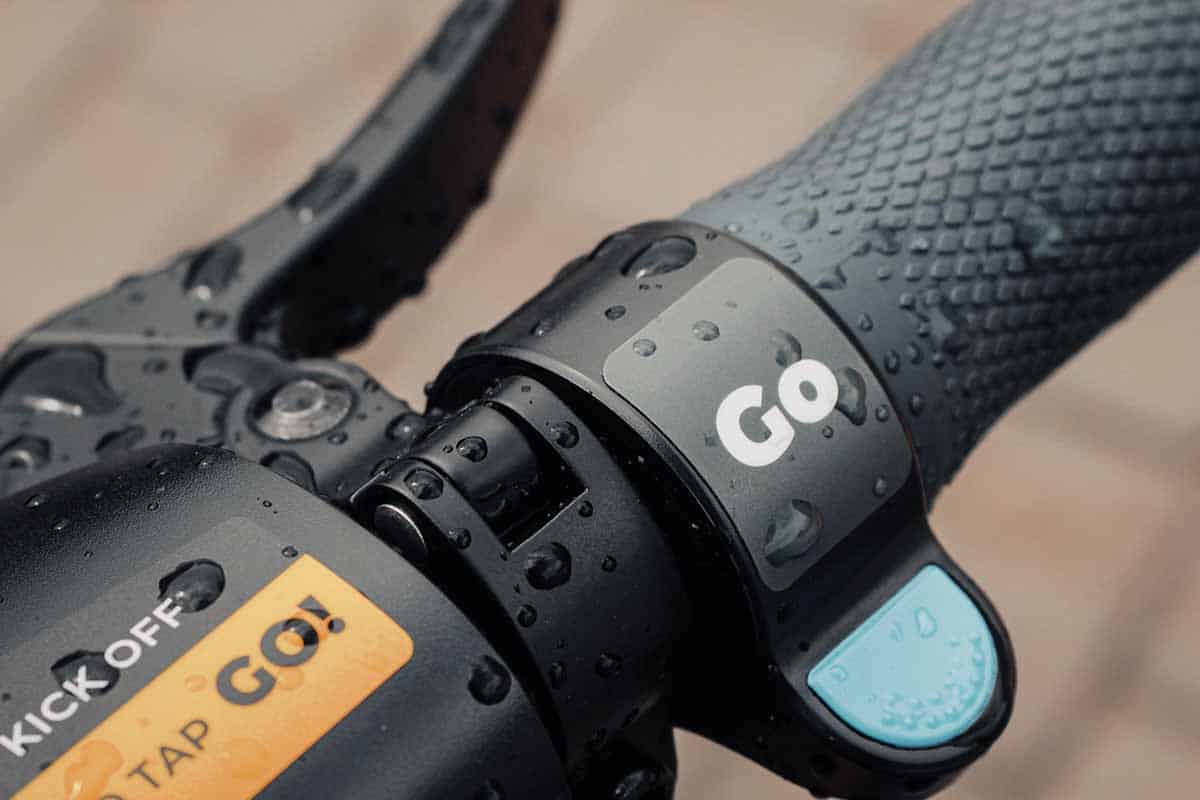Electric scooters have become increasingly popular in recent years as a convenient and environmentally-friendly mode of transportation. However, with the unpredictable nature of the weather, it’s important to consider whether it’s safe to ride one in the rain.
Issues associated with riding an electric scooter in the rain include slippery surfaces, braking delays, motor, and battery damage, decreased driver visibility, and potential health risks.
While not recommended, you can reduce these risks by covering your motor, wearing appropriate clothing, avoiding puddles, driving slowly, and sticking to well-lit roads.
In this article, we’ll explore the risks and considerations involved in riding an electric scooter in wet conditions and give tips for staying safe if you brave the rain.

Is Riding an Electric Scooter in the Rain Dangerous?
You can ride an electric scooter in the rain. However, it can be dangerous for several reasons.
Not only is there a risk of injury, but it can also potentially damage the scooter.
Slippery Surfaces
When it rains, the roads automatically become more slippery, making it difficult for wheels to grip the road.
Wet surfaces can reduce traction, making it more difficult to control your electric scooter and increasing the risk of slipping and falling.
This is especially true if you’re riding on a smooth surface, such as polished concrete or tiles.
Braking Issues
Water can cause the brakes to become less effective, making it harder to stop the electric scooter. This increases the risk of accidents and can pose a considerable threat to the safety of the rider.
This risk increases when dealing with slippery surfaces and is the number one reason to avoid riding an electric scooter in the rain.
Motor and Battery Damage
Water also can damage the electric components of the scooter, such as the battery and motor.
These components are not designed to be exposed to water and can be damaged if they become wet.
If water does get into the scooter’s components, it can cause them to malfunction or fail, which can be costly to repair.
I wrote this article about how to fix electric scooter water damage to help you out in the unlucky case that your scooter picks up water damage.
Decreased Visibility
In addition to the risk of slipping and falling, riding an electric scooter in the rain can also be dangerous due to decreased visibility.
Rain can obscure your vision, making it harder to see obstacles in your path or other vehicles on the road. This can increase the risk of collisions and accidents.
Health Risk
A scooter is an uncovered vehicle, which means you’ll be fully exposed to the elements throughout your journey.
While you can wear a raincoat, a helmet, or other clothing items, there’s still a risk you’ll end up cold and wet.
Depending on the weather conditions and intensity of rain in your area, you’ll risk catching flu, pneumonia, or any number of illnesses by riding a scooter in the rain.
For all the above reasons, rainy weather is one of the few situations in which walking may actually be easier than travelling by electric scooter, not to mention safer.

How To Stay Safe While Riding an Electric Scooter in the Rain.
Despite these risks, riding an electric scooter in the rain is possible as long as you take appropriate precautions. There are a few things to keep in mind to stay safe.
1. Cover Your Motor
Place a plastic bag or other protective covering to shield your motor from the rain. While this is not guaranteed to work, it is your best option when it comes to protecting your scooter.
2. Wear Appropriate Clothing
If you want to ride an electric scooter in the rain, you need to invest in a high-quality waterproof jacket, pants, and shoes with good traction to help prevent slipping.
Avoid wearing loose clothing that could get caught on the wheels of your scooter.
3. Drive Slowly
Wet roads and sidewalks can be slippery, so it’s essential to slow down and take it easy when riding in the rain.
This will give you more time to react to any unexpected obstacles or hazards in your path.
4. Don’t Rely on Your Brakes
Wet brakes can be less effective than dry brakes, so it’s important to use them cautiously. Apply the brakes gently and gradually to avoid skidding or losing control of your electric scooter.
5. Increase Visibility
Make sure you are visible to other road users by wearing reflective clothing and using lights on your electric scooter. This will help reduce the risk of collisions despite the lowered visibility.
Also, try to use well-lit streets instead of darker side roads.
6. Avoid Puddles
Puddles can hide hazards such as potholes, debris, or even electrical wires.
It’s best to avoid riding through them if possible or at least slow down to be prepared for any potential hazards.
7. Check Your Electric Scooter
Before riding in the rain, it’s a good idea to check your electric scooter to ensure it’s in good working order.
Ensure the tires are properly inflated, and the brakes are functioning correctly.
If you notice any issues, it’s best to have it repaired before riding in wet conditions.
FAQs
Is Rain Bad For Electric Scooters?
Escooters come with batteries and motors that are easily damaged with water. Heavy rain, hail, and snow can definitely ruin your electric scooter. There is no such thing as a waterproof escooter. At most, electric scooters are water resistant, which means some models can tolerate low levels of humidity or water exposure.
Can An Electric Scooter Be Left Out In The Rain?
You should not leave your electric scooter out in the rain if avoidable. Scooters with low IP ratings cannot tolerate even a small amount of water exposure. Water resistant scooters with higher IP ratings can be left out in a drizzle or mild rain.
Final Thoughts
In conclusion, riding an electric scooter in the rain can be dangerous due to the slippery nature of wet roads and sidewalks and the decreased visibility.
However, it is possible to ride safely in wet conditions with suitable precautions.
Dress appropriately, slow down, use your brakes wisely, stay visible, and avoid puddles. Check your electric scooter before heading out in the rain to ensure it’s in good working order.
Remember to only take your scooter out in the rain if it is an unavoidable necessity. Always consider the potential risk to your health and safety.
If you are planning to ride your scooter while it’s raining, also factor in the increased repair and maintenance costs from faulty batteries, frequent tire changes, etc.
After you take it out in the rain, make sure to clean and dry it thoroughly. Leaving it in your garage while wet will likely lead to rusting, battery damage, and countless other issues.
If you take suitable precautions and drive carefully, you can minimize the risks that come with driving in the rain.
- Tesla Charger Installation Cost (Home Setups) - March 1, 2024
- Tesla Phone Key Disconnected (Troubleshooting Guide and Quick Fixes) - March 1, 2024
- Tesla FSD 12 (Explained) - March 1, 2024